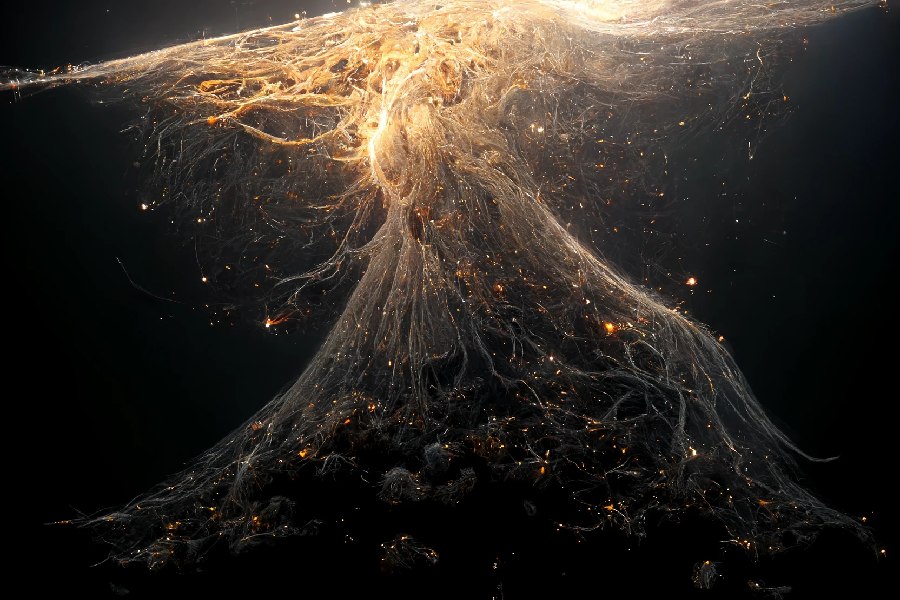Beyond our Milky Way’s star-filled home lies an immense cosmic structure – chains of gathered galaxies strewn like jewels across deep space. Nestled within the Virgo Cluster rests local groupings comprising our greater galactic community.
Welcome to Laniakea Supercluster. We will traverse this ocean of islands, navigate its boundaries, meet peculiar neighbors, and decode our locality’s role within the grander scheme. What is this Laniakea Supercluster that encompasses our galaxy amidst its gravitational tides?
First, we will unravel what a “supercluster” actually is and illuminate Laniakea’s breadth across the stars. We ponder where our very neighborhood resides within the sprawling structure of all galaxies. We also explore recent insights gained by mapping Laniakea’s mass, dynamical flow, and place in space and time.
How is humanity’s home supercluster moving through the greater cosmic web? We illuminate Laniakea Supercluster’s past, present, and future across unimaginable scales. What overarching flow determines the shared journey of our Milky Way and 100,000 neighbors through the deep universe? The answers are truly astounding!

What Is Laniakea Supercluster?
What is Laniakea Supercluster? The Laniakea Supercluster is a massive collection of galaxies in space, discovered in 2014. It includes our Milky Way galaxy and thousands of others. Its name, meaning “immense heaven” in Hawaiian, reflects its enormous size spanning over 500 million light-years.
Understanding the Laniakea Supercluster helps scientists grasp how galaxies are arranged in the universe on a large scale. It’s like a big neighborhood of galaxies, and studying it gives us insights into the structure of the cosmos.
Origin of name
The name “Laniakea” carries a deeper meaning, bridging the gap between scientific discovery and cultural heritage. It originates from the Hawaiian language, where lani translates to “heaven” and ākea signifies “spacious, immeasurable”.
This name beautifully captures the immensity and awe-inspiring nature of this supercluster. It reflects the enduring connection between humankind and the celestial realm. The honor of naming Laniakea fell to the same team that defined its boundaries – including University of Hawaii astronomer Neta Bahcall.
It was chosen by the team that defined Laniakea’s boundaries, including Hawaiian astronomer Neta Bahcall. The name connects to the Hawaiian cultural tradition of looking to the heavens for navigation.
Just as ancient islanders used the stars and galaxies to find their way, the Laniakea supercluster helps map our place in the greater cosmos.
Discovery of Laniakea
The discovery of Laniakea marked a significant milestone in our understanding of the large-scale structure of the universe. This revelation wasn’t a singular moment but rather a culmination of efforts and advancements in various fields of astronomy. It finally unveiled what supercluster we are in and its significance for us.
Mapping galaxy motions and redshift analysis
By analyzing the motions of galaxies throughout the observable universe, astronomers observed a peculiar phenomenon. Galaxies within a specific region, including our own Milky Way, appeared to be moving towards a common point known as the Great Attractor.
Further studies utilizing the concept of redshift, a phenomenon where light waves from distant objects are stretched, provided additional evidence for the existence of a large-scale structure pulling galaxies towards its center.
Defining Superclusters
Combining these observations with existing knowledge about galaxy clusters and superclusters, astronomers led by R. Brent Tully of the University of Hawaii proposed the existence of the Laniakea Supercluster in 2014. This discovery reshaped our understanding of the cosmic neighborhood, placing the Milky Way within a much larger and more complex structure.
Structure and composition of Laniakea
Laniakea boasts a diverse and complex structure, encompassing a variety of celestial objects. Numerous galaxy clusters, like the Virgo Supercluster, which houses our home Milky Way galaxy, reside within Laniakea.
How big is the Laniakea supercluster?
These clusters contain hundreds or even thousands of individual galaxies bound together by gravity. Smaller groupings of galaxies, known as groups, also contribute to the structure of Laniakea.
These groups often exhibit gravitational interactions and mergers that unfold over extended periods of cosmological time. Laniakea is not uniformly filled with galaxies, either. Sparse regions known as voids exist between the galaxy clusters and groups.
This creates a web-like arrangement of matter throughout the immense supercluster. The resulting Laniakea structure is a rich tapestry of galaxy clusters, groups, and voids. This structure extends over 500 million light years. It contains over 100,000 galaxies.
Description of the Massive Structure
At the center of Laniakea lies the Great Attractor, a massive concentration of matter exerting a gravitational pull on nearby galaxies, including our own. This pull is responsible for the observed motion of galaxies towards the center of the supercluster.
Stretching across Laniakea are long, thread-like structures called filaments containing galaxies and intergalactic gas. These filaments connect galaxy clusters and groups, forming the cosmic web that pervades the supercluster.
Despite the gravitational pull of the Great Attractor, the universe is still expanding. Laniakea, like other superclusters, is continuously expanding as well. This offers a glimpse into the dynamic nature of the cosmos.
Conclusion
Here, we conclude our journey through the cosmic ocean of Laniakea – our home supercluster web containing over 100,000 galaxies. We hope the realization has dawned that even our gigantic Laniakea island floats as but one node in an endless archipelago of superclusters populating the deep universe.
This article illuminated the immense expanse, complex structure, and dynamical flow of the Laniakea Supercluster. It gives our Milky Way galaxy context amid the space-time tapestry of all creation.
This article has illuminated what supercluster is the Milky Way in and what group our own galaxy belongs to.
As we continue charting humanity’s course through the heavens strung with galaxies to guide us, may the bonding nature of such stellar streams inspire further cosmic exploration. May it also strengthen terrestrial bonds between all peoples under these same ancient skies.
